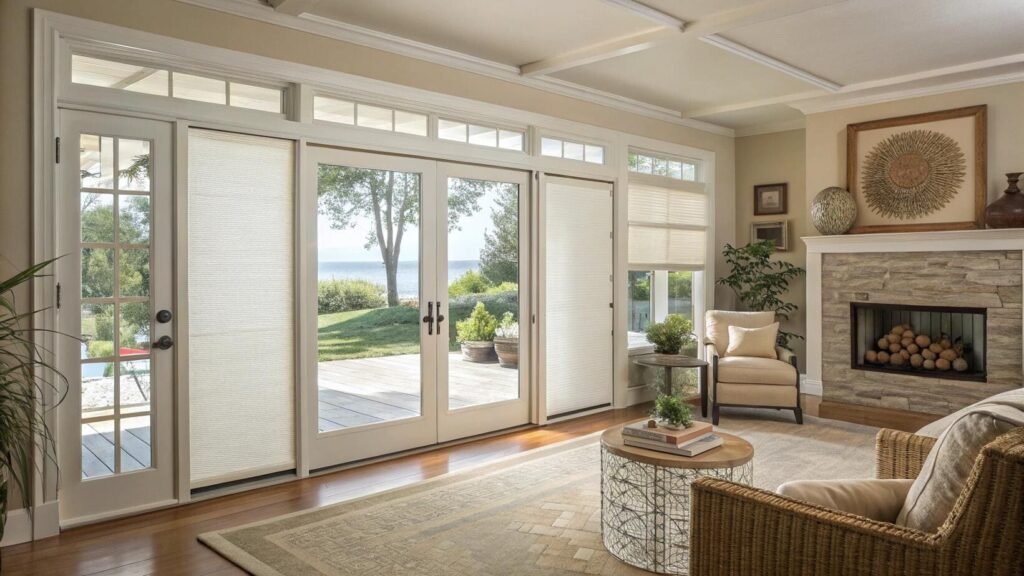Your large sliding glass door lets in beautiful light but also creates a wall of heat and glare. Standard horizontal blinds are impractical, and you need a solution that is easy to use and doesn't block the doorway.
The best blinds for sliding glass doors are panel track blinds[^1] and modern vertical blinds. These systems are designed to slide horizontally, matching the door's function and providing seamless coverage for wide openings without obstructing traffic.

Sliding doors are one of the most challenging openings to cover correctly. As a blinds specialist, I work with project managers like Emma to find solutions that are not just beautiful, but also highly functional. It's not enough for the blind to look good; it has to withstand daily use, clear the walkway, and meet the specific needs of the space, whether that's blocking the sun or saving energy. The key is choosing a system designed for wide, horizontal movement. Let's explore the best options.
What type of blind is best for sliding doors?
You need a window treatment that opens side-to-side just like your door. You know that a traditional roller blind or venetian blind that rolls up just won't work for a high-traffic entryway[^2].
Panel track blinds are the superior modern solution. They use wide, vertical panels of fabric that glide smoothly on a top-mounted track, offering a clean, contemporary alternative to traditional vertical blinds.
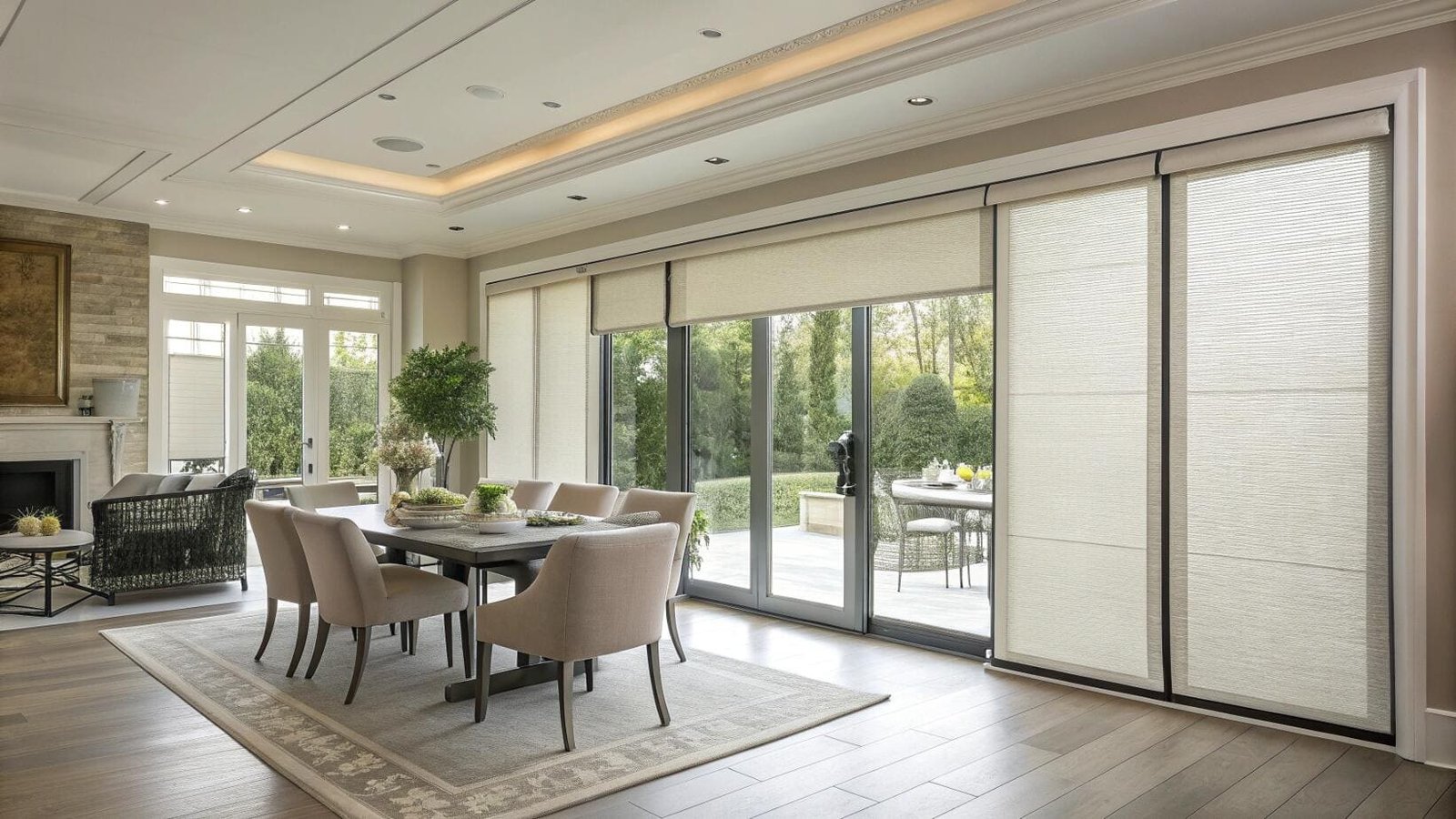
For years, the only real option was classic vertical blinds. While functional, many people find them dated. Today, panel track blinds are what I recommend for most modern residential and commercial projects. Instead of narrow slats, a panel track system uses large fabric panels, typically 15 to 30 inches wide. These panels overlap slightly to ensure privacy and light blockage. They all hang from a single track mounted above the door. This design has two major advantages. First, the look is much cleaner and more architectural, like a sliding wall of fabric. Second, because the panels are wider, you have fewer of them, creating a less busy appearance. They slide effortlessly out of the way, providing an elegant and highly practical solution for any sliding door[^3].
Are blinds or curtains better for sliding doors?
You are stuck between the sleek function of blinds and the soft, classic look of curtains. You want to know which one is truly the more practical and stylish choice for a busy sliding door.
Blinds offer more precise light control[^4] and a smaller footprint, making them very practical. Curtains provide better insulation and a softer aesthetic but can be bulkier and harder to keep clean in a high-traffic area.
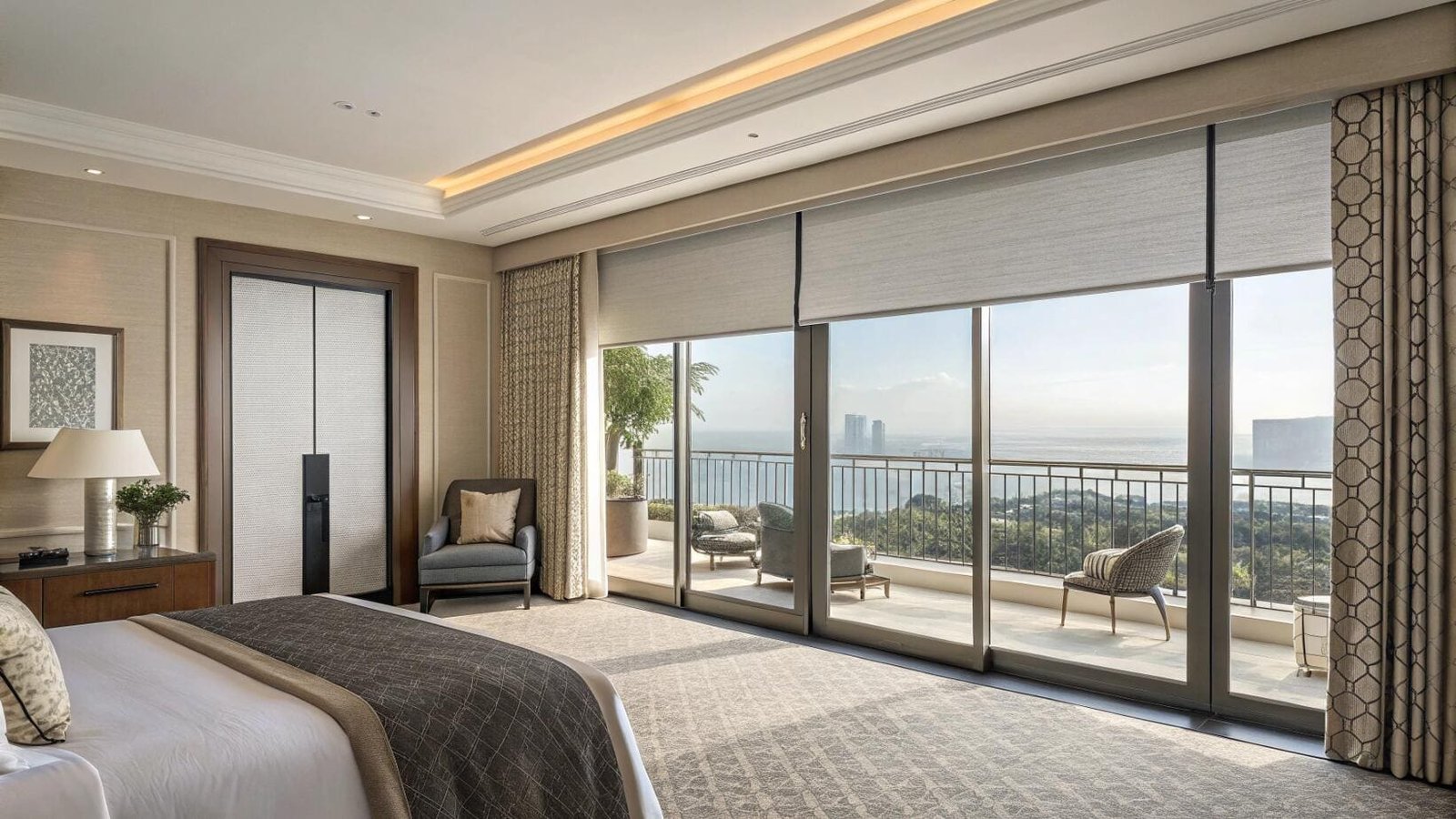
This is a decision that comes down to balancing functionality with your design vision. I've helped countless clients weigh these options. A panel track blind or vertical blind allows you to tilt the slats or slide the panels just enough to cut the glare while maintaining a view. They are also typically made from durable, easy-to-clean synthetic fabrics[^5]. Curtains, on the other hand, are either open or closed; there is not much in between. However, a thick, insulated curtain can offer superior thermal performance[^6]. To help you decide, here is a simple breakdown of how they compare.
| Feature | Blinds (Panel Track / Vertical) | Curtains |
|---|---|---|
| Light Control | Excellent; precise tilting and sliding | Limited; basically open or closed |
| Footprint | Minimal; stacks tightly to the side | Bulky; requires significant stack-back space |
| Maintenance | Easy to wipe down and clean | Requires machine washing or dry cleaning |
| Aesthetics | Modern, clean lines[^7], architectural | Soft, classic, traditional |
Zebra vs Honeycomb: modern look or peak insulation?
You need to choose a fabric for your new blinds. You love the modern look of Zebra fabric[^8], but the project specifications call for high energy efficiency, which makes you think of Honeycomb shades.
Zebra fabric offers a sleek, modern look with adjustable light-filtering[^9] modes. Honeycomb fabric[^10] provides far superior insulation, making it the best choice for energy-conscious projects in very hot or cold climates.
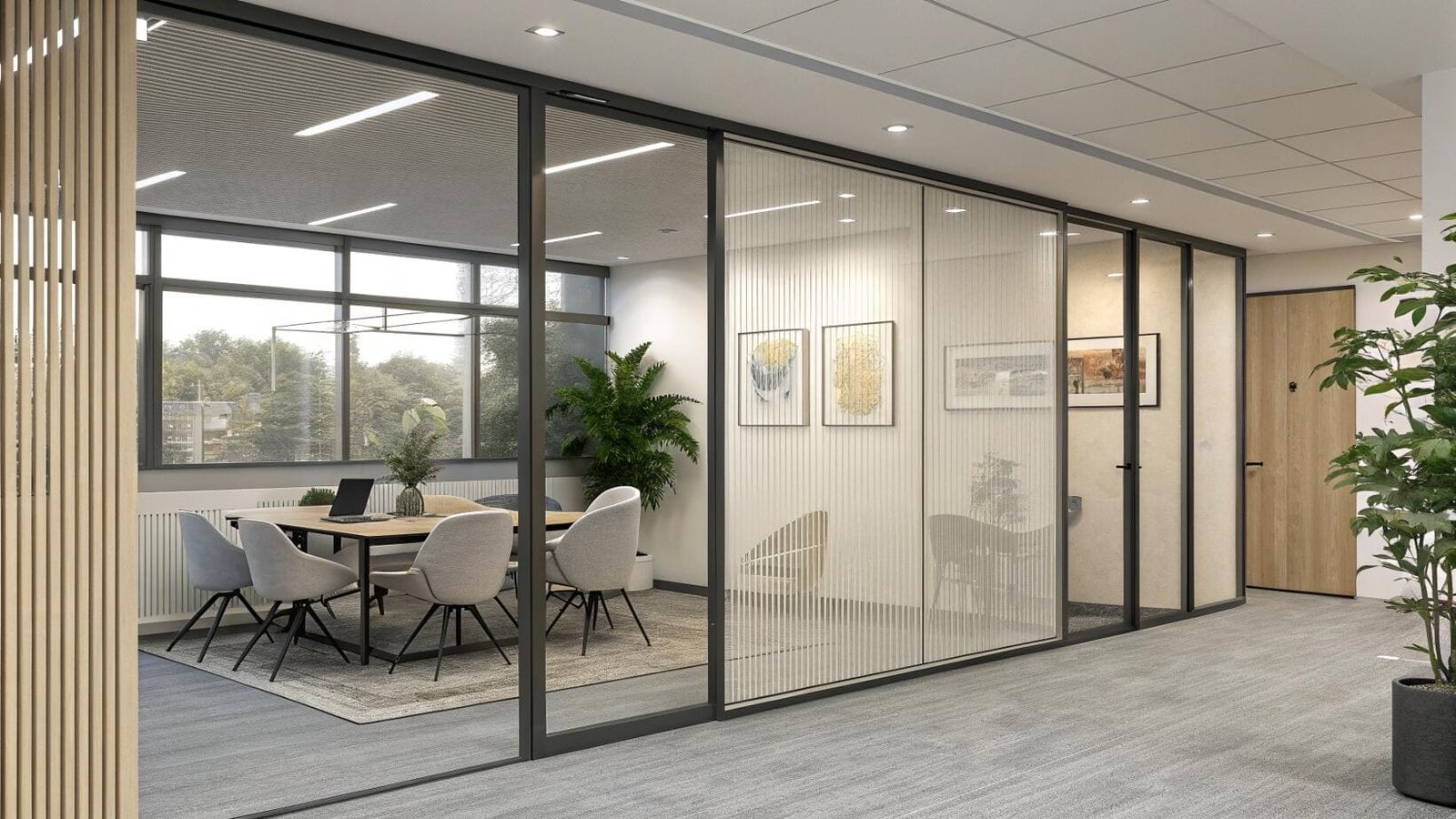
When designing a vertical blind or panel track system, the fabric choice is everything. These two options serve very different purposes. Zebra fabric, with its alternating sheer and solid stripes, is a design-forward choice. It allows you to switch between a view-through mode and a privacy mode without moving the entire blind, which is perfect for commercial patios or modern homes. It looks fantastic and offers great versatility. Honeycomb fabric, also known as cellular fabric, is the performance champion. Its unique, triple-cell structure traps air, creating an insulating barrier. This significantly reduces heat transfer through the large glass door, keeping the room cooler in the summer and warmer in the winter. For projects in North America and the EU where energy codes are strict, a vertical honeycomb blind is often the best solution to meet those standards.
How do you keep the doorway completely clear?
You are installing blinds on a sliding door that is the main entrance to your backyard or patio. You need to make sure the blinds don't get in the way when people are coming in and out.
The best way to ensure a clear doorway is with a side-stacking panel track system. The track extends beyond the door frame, allowing the panels to slide completely clear of the opening.
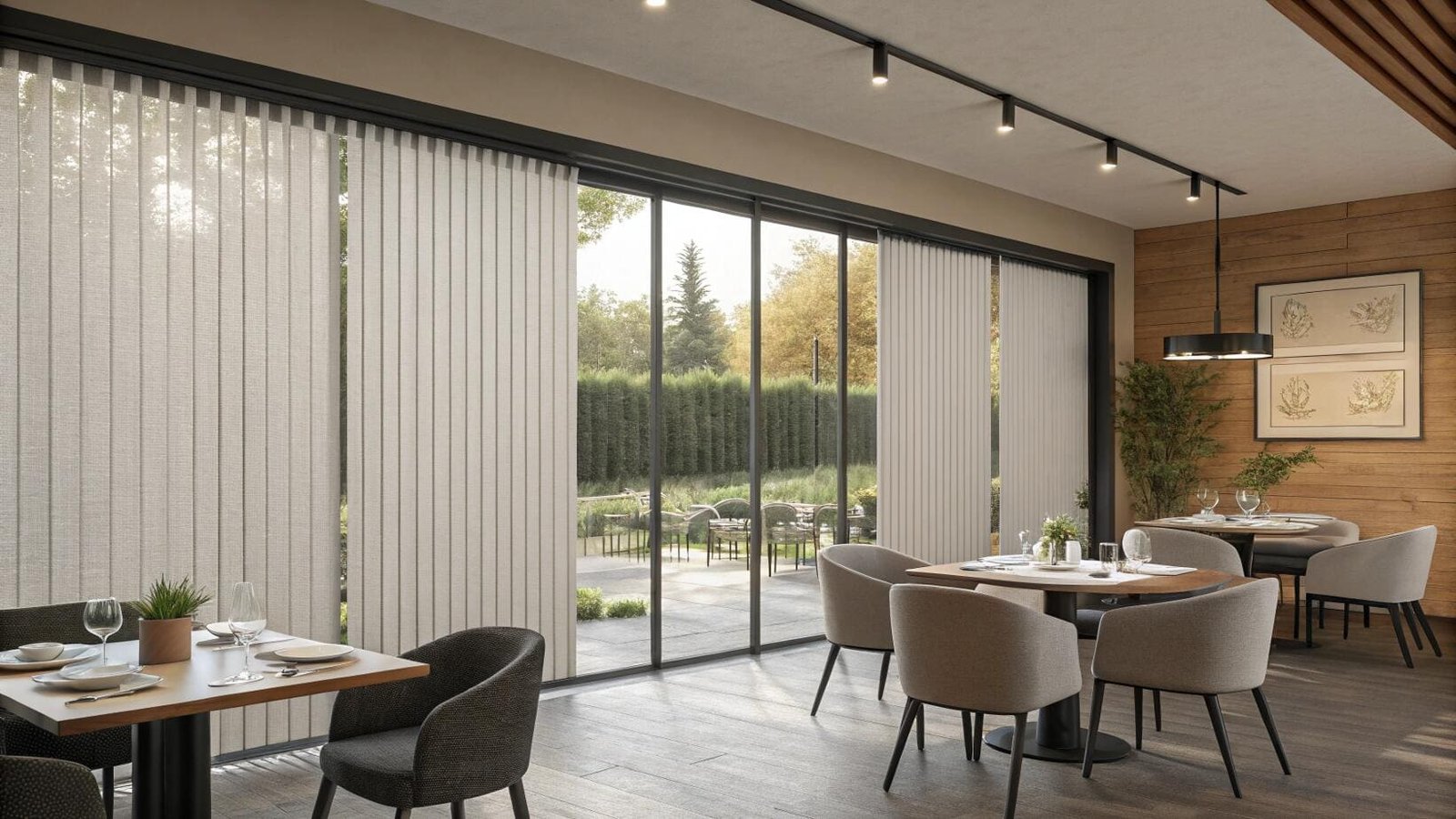
This is a critical detail for usability. The goal is to make the blinds disappear when the door is in use. When we install a panel track system, we measure the track to be wider than the door itself. This extra space on the side is called the "stacking" area. When you open the blinds, all the panels glide over and stack neatly on the wall next to the door. This leaves the entire width of the sliding door completely open, with no fabric hanging in the way. It also protects the blinds from wear and tear from people passing through. We mount the system on a top track only, so there is no bottom rail to trip over. Modern systems often include magnetic alignment, which ensures the panels hang perfectly straight and do not sway when the door is opened or closed.
What about child safety and motorization?
You are specifying blinds for a family home or a commercial space where safety is the top priority. Long, dangling cords are not an option, and you need a system that is safe and easy for anyone to use.
All modern sliding door blinds should be cordless. Safe options include a simple wand control or a fully motorized system[^11]. Motorization offers the ultimate in convenience and safety and can be powered by rechargeable batteries.

For any project I work on, child safety is non-negotiable. Cordless operation is the standard. The simplest and most cost-effective cordless option is a wand control. A rigid wand is attached to the lead panel, and you simply push or pull it to move the blinds. For the ultimate in safety and convenience, I always recommend motorization. With the push of a button on a remote or a wall switch, the blinds glide open and closed smoothly. Many of our systems run on long-lasting, rechargeable lithium-ion batteries. A single charge with a standard USB-C cable can last 4 to 6 months. For a truly maintenance-free solution, we can add a slim solar panel strip at the top. This trickle-charges the battery using daylight, so you never have to plug it in. This is a must-have feature for high-end residential projects and any B2B application where safety compliance is key.
Conclusion
Finding the perfect blind for your sliding door means choosing a system that moves with it. Modern panel tracks and vertical blinds, in either Zebra or Honeycomb fabric, offer stylish, safe, and energy-efficient[^12] solutions.
---
[^1]: Explore the advantages of panel track blinds, which offer seamless coverage and modern aesthetics for sliding doors.
[^2]: Learn about blinds that are durable and practical for high-traffic entryways.
[^3]: Find the best window treatments specifically designed for sliding doors to enhance functionality.
[^4]: Learn about various window treatments that provide excellent light control for different spaces.
[^5]: Discover why synthetic fabrics are a practical choice for blinds in terms of durability and maintenance.
[^6]: Learn how specific blinds can enhance thermal performance and energy efficiency in your home.
[^7]: Explore how modern blinds with clean lines can elevate the aesthetic of your space.
[^8]: Understand the benefits of Zebra fabric, which offers versatility and modern design for blinds.
[^9]: Explore light-filtering options that provide privacy while allowing natural light into your space.
[^10]: Explore how Honeycomb fabric provides superior insulation, making it ideal for energy-efficient projects.
[^11]: Discover the convenience and safety features of motorized blinds for modern living.
[^12]: Find out which blinds can help save energy while providing style and functionality.
Partner with VelaBlinds for Your Next Project
Smart window treatments shouldn't be complicated. After working with 500+ distributors and contractors worldwide, I've streamlined the process to get you quality products, competitive pricing, and reliable support - every time.
Why project professionals choose VelaBlinds:
- ✅ Fast, Accurate Quotes - Detailed specs and pricing within 24 hours
- ✅ Transparent Pricing - No hidden fees, volume discounts clearly outlined
- ✅ Quality Assurance - Direct partnerships with certified OEM manufacturers
- ✅ Project Support - Dedicated account manager from quote to delivery
Start your next project:
📧 Quick Quote: Send your requirements to info@velablinds.com
📱 Direct Contact: WhatsApp +86 137 2012 8317
🌐 Browse Solutions: https://velablinds.com/
📁 Product Resources: Access spec sheets, catalogs & project files
Paul Chen, Founder
"I built VelaBlinds to solve the real challenges I faced as a project buyer - long lead times, unclear specs, and unreliable suppliers. Let's discuss how we can power your projects with smarter blinds."
Serving distributors and contractors across North America, Europe, and Australia since 2018.

